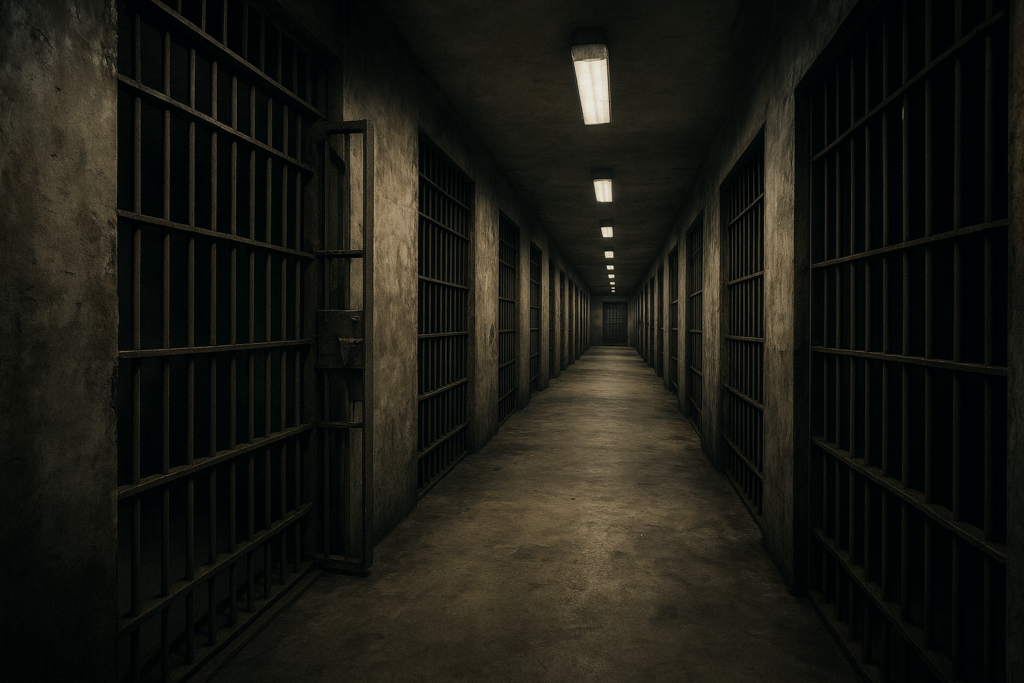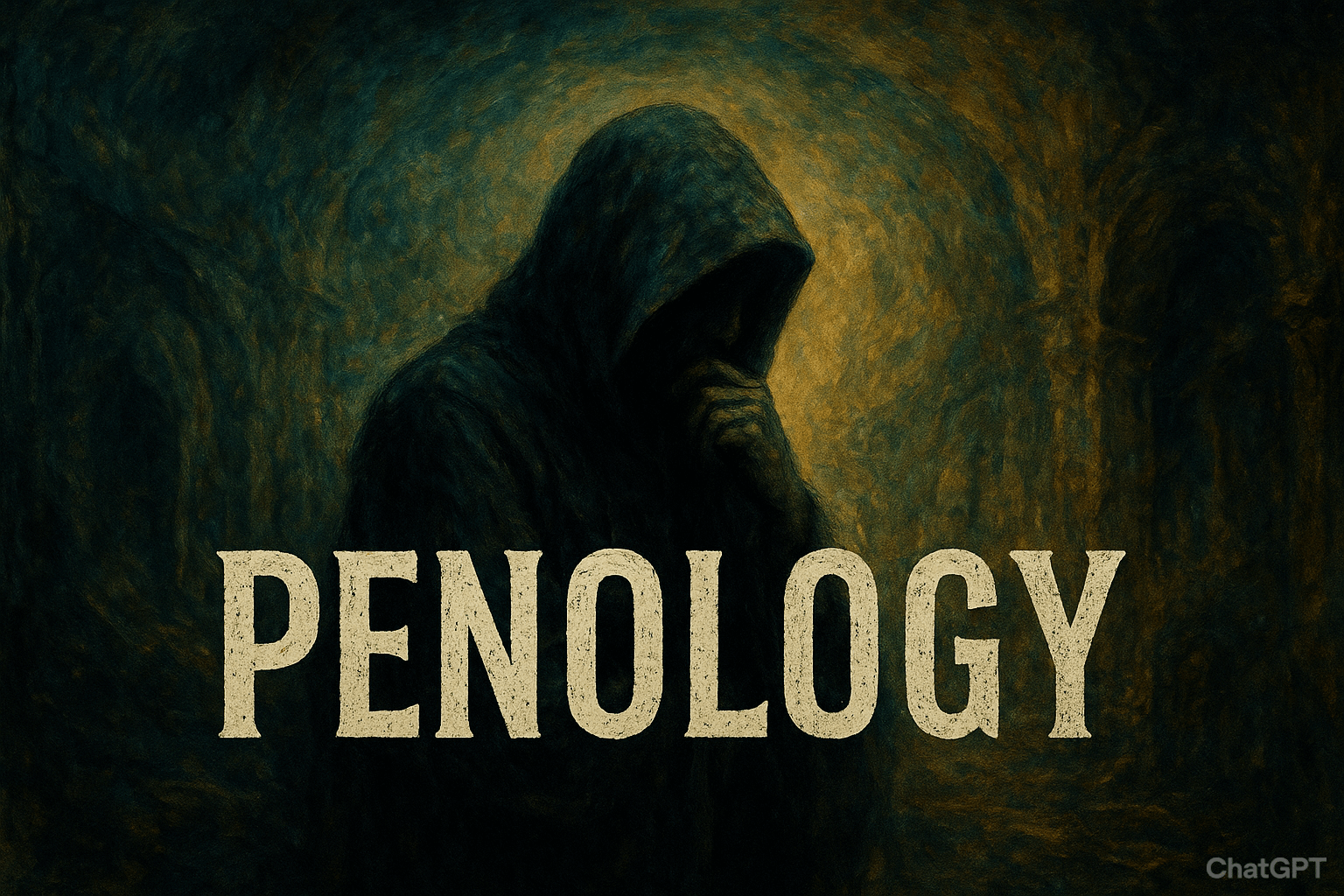Introduction
Penology is a specialized branch of criminology and criminal justice that examines the philosophy, methods, and effectiveness of punishment. It focuses on how societies penalize offenders and how they can be corrected, reformed, and reintegrated into society. The concept of penology bridges law and social science, highlighting the deep relationship between crime, justice, and human behavior.
In today’s world, where debates around prison reform, capital punishment, and restorative justice are widespread, the study of penology has become more relevant than ever. Governments, policymakers, and researchers seek balanced approaches that ensure justice, protect society, and uphold human rights. Understanding penology helps assess whether punishments achieve their intended goals or cause more harm than good.
Furthermore, penology provides insight into the moral and ethical questions surrounding punishment. Should justice focus on deterrence and retribution, or on rehabilitation and second chances? By addressing these questions, penology contributes not only to criminal justice systems but also to broader discussions about fairness, humanity, and the role of the state.
What is Penology?
Definition of Penology
The term penology originates from the Latin poena (punishment) and the Greek suffix -logy (study). It is the scientific study of punishment and correction within criminal justice systems. Penology explores the methods used to discipline offenders, the justification for these methods, and their effects on both individuals and society.
Unlike purely legal perspectives, penology integrates sociology, psychology, and ethics, making it an interdisciplinary field. Penologists study how imprisonment affects behavior, whether community service reduces reoffending, and how rehabilitation programs promote social stability. Its ultimate aim is not punishment for its own sake but ensuring that justice systems operate effectively, humanely, and efficiently.
Difference Between Penology and Criminology
Although penology and criminology are closely related, they focus on different stages of the justice process. Criminology investigates the causes and patterns of crime, asking, “Why do individuals commit crimes?” Penology, however, deals with what happens after a crime is committed—asking, “What should society do in response?”
Criminology emphasizes understanding, while penology emphasizes action. The two complement each other: criminology provides the theoretical foundation, and penology applies that understanding to real-world justice systems.
Why Penology Matters in Criminal Justice
Penology shapes how societies manage crime. Governments design prison systems, sentencing policies, and correctional programs based on penological theories. A system focused on deterrence may impose harsher penalties, while a reform-oriented system emphasizes education and rehabilitation.
Penology also evaluates the effectiveness of punishment. Do prisons deter or perpetuate crime? Does rehabilitation lower reoffending rates? By addressing these questions, penology ensures that justice systems are both fair and effective. In modern contexts, it aligns with international human rights standards that emphasize humane treatment and proportionality.
Historical Development of Penology
Early Forms of Punishment
In ancient societies such as Mesopotamia, Egypt, Greece, and Rome, punishment was harsh, public, and retributive. Common penalties included stoning, exile, mutilation, and execution, designed to instill fear and assert authority. Justice was equated with revenge rather than reform, and little distinction existed between minor and major crimes.
Religious and cultural beliefs reinforced this view. For example, early Hebrew law reflected the principle of “an eye for an eye,” while Roman punishments were often political tools of control. Yet, early philosophers like Plato and Aristotle hinted at the need for justice that maintained social harmony—a seed for more humane approaches in later centuries.
Classical School of Penology (18th Century)
The Enlightenment transformed penological thought. Thinkers like Cesare Beccaria and Jeremy Bentham opposed cruelty and advocated rational justice. Beccaria’s On Crimes and Punishments (1764) argued that punishment should be proportionate, swift, and fair, serving deterrence rather than vengeance. Bentham, through utilitarianism, insisted that punishment must produce more social benefit than harm.
The Classical School marked a shift from arbitrary retribution to rational deterrence and proportional justice. Its influence remains evident in today’s structured sentencing and codified criminal laws.
Modern Approaches to Penology
By the 19th and 20th centuries, focus expanded toward rehabilitation and reform. Reformers realized that punishment alone rarely changed behavior. Education, vocational training, and psychological treatment became integral to correctional philosophy. Crime began to be seen as a social and psychological phenomenon, influenced by environment, poverty, and mental health.
Modern penology integrates criminology, sociology, and psychology to balance punishment with prevention and rehabilitation. International human rights conventions and restorative justice movements continue to shape this evolving field.
Objectives of Penology
Punishment and Retribution
Retribution is one of the oldest objectives of punishment, rooted in moral philosophy and the idea that offenders must pay for their crimes. It satisfies society’s demand for justice and restores moral balance. However, critics argue that retribution, while emotionally satisfying, does not necessarily prevent crime or rehabilitate offenders. Modern justice systems seek proportional punishment that serves both justice and social purpose.
Deterrence of Crime
Deterrence aims to prevent crime by creating fear of consequences. It operates on two levels: general deterrence, discouraging society from crime, and specific deterrence, preventing reoffending by individuals. Effective deterrence requires punishments that are swift, certain, and proportional. However, since not all crimes are rational decisions, deterrence alone is insufficient, making its combination with rehabilitation essential.
Rehabilitation and Correction
Rehabilitation seeks to transform offenders into law-abiding citizens. Programs include education, therapy, and vocational training that address root causes like addiction, poverty, and trauma. Rehabilitation reduces recidivism and promotes reintegration, making it both humane and cost-effective. Nations prioritizing rehabilitation—such as Norway—achieve significantly lower reoffending rates, proving its long-term social benefits.
Social Protection and Prevention
Penology also aims to protect society from dangerous individuals. Imprisonment, probation, and preventive measures help maintain public safety. Yet, modern systems recognize that social protection also involves addressing the root causes of crime through community programs and social reform, ensuring long-term prevention rather than constant punishment.
Theories in Penology
Retributive Theory
Retributive theory emphasizes moral balance, asserting that offenders deserve punishment because they violated the law and social order. It restores justice and satisfies victims’ expectations but is often criticized for focusing on vengeance rather than transformation. Despite criticism, retribution remains a foundation of many justice systems.
Deterrence Theory
Deterrence theory holds that punishment serves as a warning to others. Its success depends on the certainty, swiftness, and severity of punishment. While effective for rational crimes (like fraud), it fails with crimes driven by emotion, addiction, or desperation. Modern systems combine deterrence with rehabilitation to address both behavioral and structural causes of crime.
Reformative Theory
The reformative theory focuses on rehabilitation and personal change. It views offenders as capable of reform if given proper guidance and opportunities. Prisons become institutions for education and therapy rather than mere confinement. This theory underpins modern human rights–based correctional systems.
Preventive Theory
Preventive theory seeks to stop crime before it occurs by incapacitating offenders or enacting preventive measures such as gun laws and surveillance. It focuses on removing the opportunity for crime but raises ethical questions about balancing security and freedom.

Methods and Approaches in Penology
Deterrent Approach
The deterrent approach uses punishment as a warning to discourage crime. Strict laws and visible enforcement reinforce this principle. However, research shows that certainty and efficiency are more effective than severity alone, encouraging reforms that prioritize justice speed over harsher penalties.
Rehabilitative Approach
This approach prioritizes behavioral change through therapy, education, and skill development. By addressing socioeconomic and psychological factors, rehabilitation helps offenders reintegrate into society and reduces costs compared to long-term incarceration.
Restorative Justice
Restorative justice seeks to repair harm rather than punish. It facilitates dialogue between offenders and victims, promoting accountability and reconciliation. This approach enhances victim satisfaction and fosters community healing while reducing recidivism.
Community-Based Corrections
Community-based corrections include probation, parole, and electronic monitoring, allowing offenders to live under supervision while maintaining social ties. It alleviates prison overcrowding and supports reintegration, reflecting the belief that not all crimes require incarceration.
Contemporary Issues in Penology
Prison Overcrowding
Overcrowded prisons, resulting from harsh sentencing and high incarceration rates, strain resources and lead to inhumane conditions. Alternatives such as probation, diversion programs, and restorative justice can reduce overcrowding and improve rehabilitation outcomes.
Human Rights Concerns
Human rights violations in prisons—such as abuse, neglect, and inadequate healthcare—undermine justice. The United Nations’ Mandela Rules emphasize humane treatment and dignity for all prisoners, a key concern in modern penology.
Rehabilitation vs. Punishment Debate
The tension between punitive and reformative justice persists. Some argue for strict punishment as deterrence; others advocate for rehabilitation as a long-term solution. Many systems now combine both, aiming for justice that is firm yet humane.
Privatization of Prisons
Privatized prisons spark ethical debates about profit motives in punishment. While some claim efficiency gains, critics highlight cost-cutting, exploitation, and higher recidivism. Penology examines these implications for justice, fairness, and accountability.
The Role of Penology in Criminal Justice
Policy Development
Penology informs policy by offering evidence-based insights into effective sentencing and correctional strategies. Research helps policymakers design fairer and more efficient justice systems that balance deterrence, rehabilitation, and prevention.
Crime Prevention
Through its focus on deterrence, social reform, and offender reintegration, penology contributes directly to crime prevention. By addressing root causes and promoting social stability, it helps reduce long-term crime rates.
Academic and Practical Relevance
For students and researchers, penology bridges theory and practice. It connects philosophical discussions about justice with real-world correctional policies, offering a framework for evaluating the moral and practical dimensions of punishment.
Conclusion
Penology remains a cornerstone of criminology and criminal justice. It explores how societies punish, reform, and reintegrate offenders while upholding human dignity. From ancient retributive justice to modern rehabilitative models, penology continues to evolve with the needs of society.
In a world facing prison overcrowding, human rights debates, and rising crime rates, penology offers solutions grounded in evidence, ethics, and balance. It reminds us that justice must serve both society’s protection and the offender’s humanity—ensuring a criminal justice system that is fair, effective, and compassionate.

References
- Criminology: An Introduction for Students and Researchers
👉 https://www.crimpsy.com/criminology-introduction - Key Theories of Criminology: From Classical to Modern
👉 https://www.crimpsy.com/key-theories-of-criminology - Criminal Behavior: A Multidimensional Approach to Understanding and Prevention
👉 https://www.crimpsy.com/criminal-behavior-multidimensional-approach - The Role of Technology in Modern Criminology: AI and Data Analysis
👉 https://www.crimpsy.com/technology-in-criminology - Cesare Beccaria and the Foundations of Modern Criminal Justice
👉 https://www.crimpsy.com/cesare-beccaria-criminology - Restorative Justice: Concepts and Global Practices
👉 https://www.crimpsy.com/restorative-justice - Alternatives to Imprisonment: Strategies for Rehabilitation and Reform
👉 https://www.crimpsy.com/alternatives-to-imprisonment - UNODC – Prison Reform and Alternatives to Imprisonment
👉 https://www.unodc.org/unodc/en/justice-and-prison-reform/prison-reform-and-alternatives-to-imprisonment.html - United Nations Office on Drugs and Crime (UNODC) – Global Prison Trends 2024
👉 https://www.unodc.org/documents/data-and-analysis/briefs/Prison_brief_2024.pdf - Penal Reform International – Global Prison Trends 2025
👉 https://cdn.penalreform.org/wp-content/uploads/2025/05/PRI_Global-prison-trends-2025.pdf - National Institute of Justice (NIJ) – Corrections and Rehabilitation Research
👉 https://nij.ojp.gov/topics/corrections - The Sentencing Project – Criminal Justice Reform
👉 https://www.sentencingproject.org/ - World Prison Brief – Global Prison Data and Statistics
👉 https://www.prisonstudies.org/ - NCBI – The Impact of Prison Overcrowding on Health and Rehabilitation
👉 https://www.ncbi.nlm.nih.gov/pmc/articles/PMC12219723/ - Britannica – Penology: Definition, History, and Scope
👉 https://www.britannica.com/topic/penology - Stanford Encyclopedia of Philosophy – Punishment Theories
👉 https://plato.stanford.edu/entries/punishment/ - Scholarly Commons – Penology and Corporate Crime Research Paper
👉 https://scholarlycommons.law.northwestern.edu/cgi/viewcontent.cgi?article=5484&context=jclc

